When a theoretical astrophysicist and a visual artist meet, things get complex
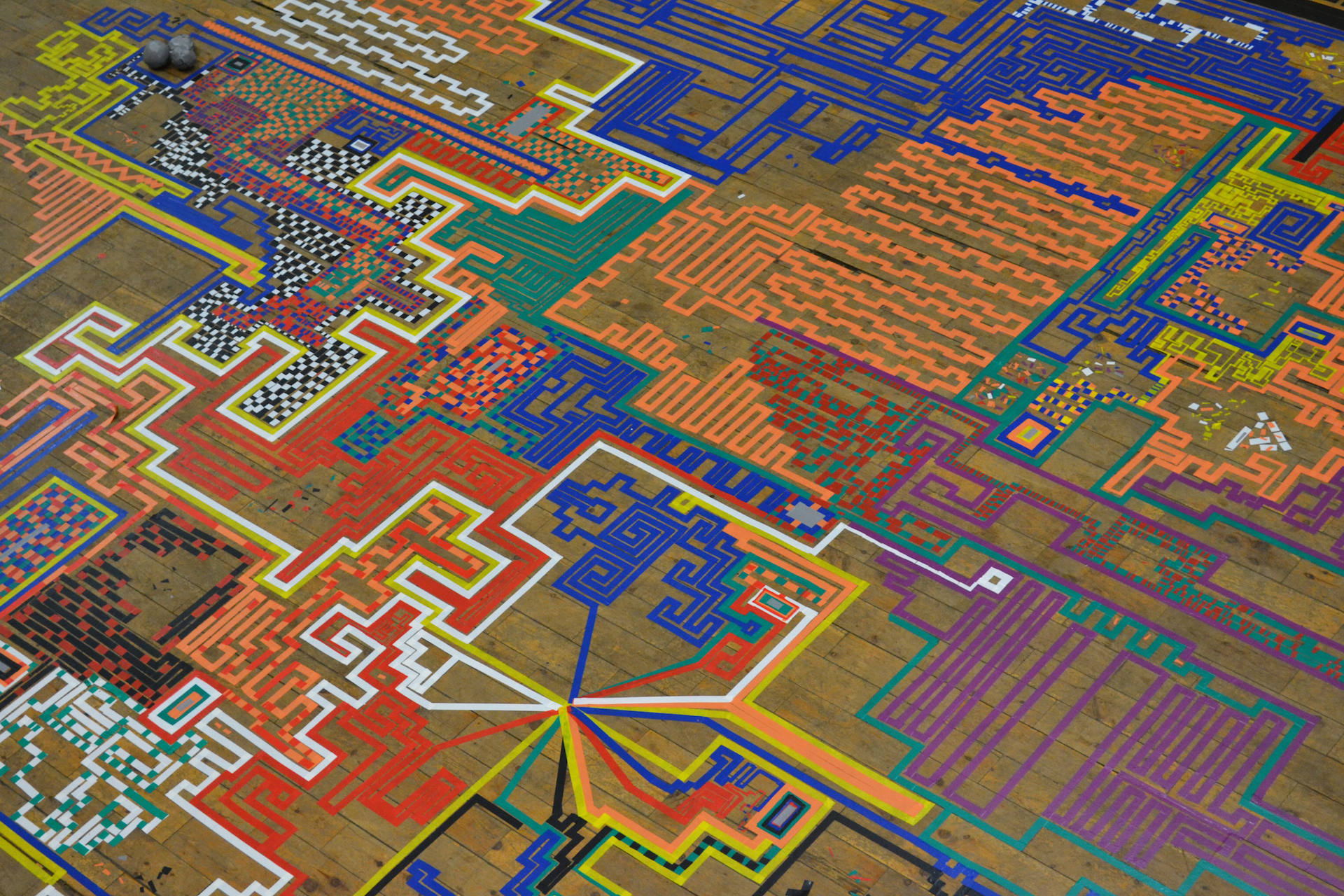
An art-science collaboration is providing new insights into complex systems and debunking the art versus science myth
Published 10 November 2015
Is it an artwork or is it an experiment? Or can it be both?
Associate Professor Andrew Melatos is a theoretical astrophysicist at the University of Melbourne. Briony Barr is a visual artist with an interest in large-scale, rule-based artworks.
Their collaboration, Drawing on Complexity, is a study of complex systems using groups of people to create large-scale floor drawings with coloured electrical (PVC) tape. They have run drawing experiments in Melbourne, Sydney and Canberra, as well as in Seoul, South Korea as part of the opening of the National Museum of Modern and Contemporary Art.
The two sat down to discuss how they met, what their collaboration means and the nature of art and science.
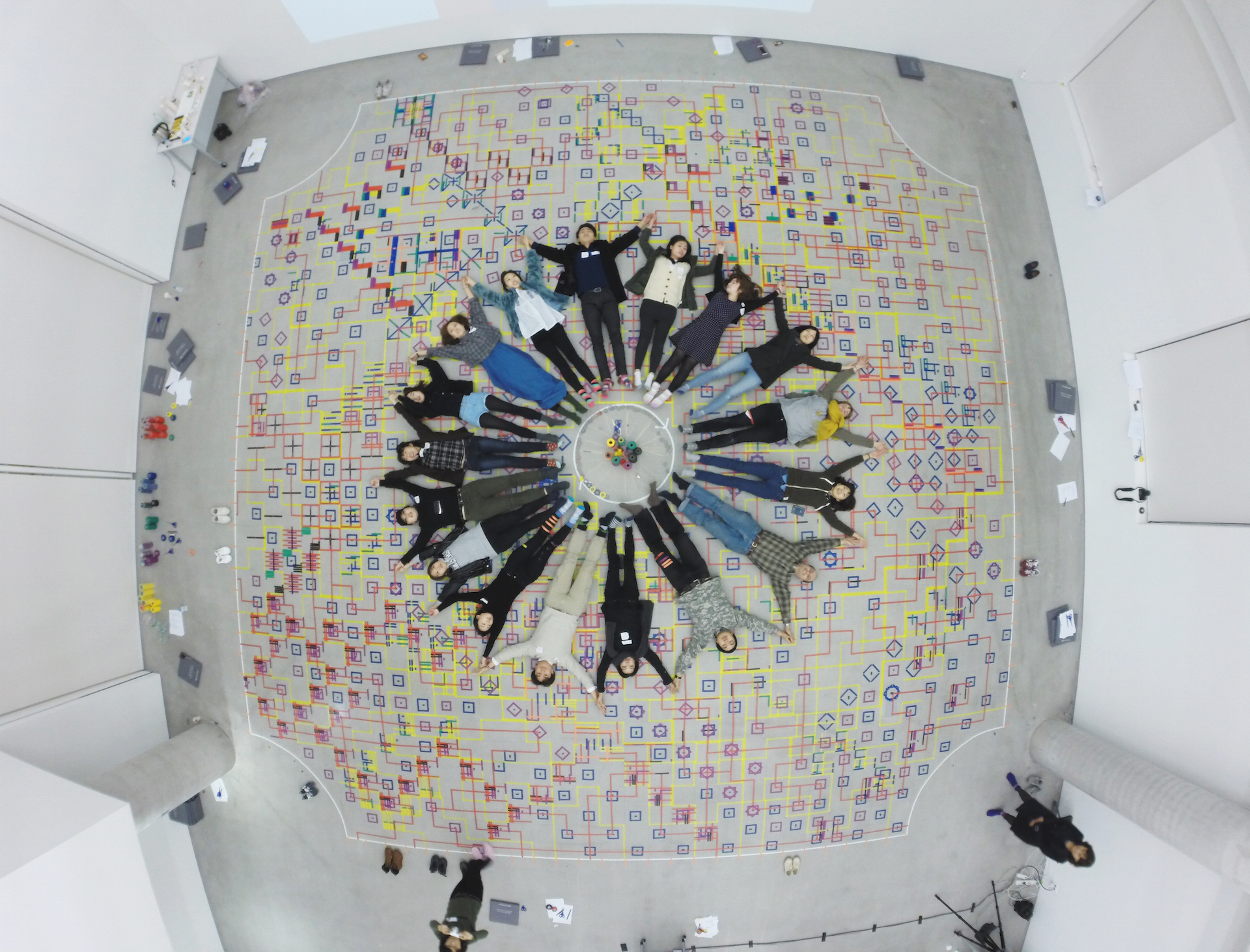
---
Briony: I first approached Andrew because I was looking to progress the work that I was doing with rule-based, collaborative drawing. I had been researching complex systems and was interested in looking at that more deeply as a narrative for future rule systems.
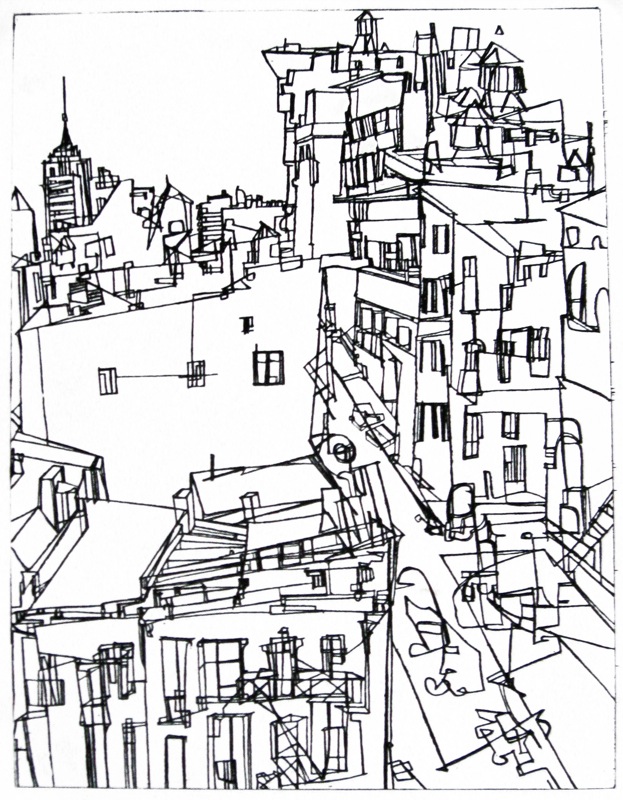
Andrew: Briony contacted me and showed me her folio of drawings, which are fantastic. I remember one that still captures my imagination, a lovely streetscape done as a blind-contour drawing, a technique which I’d never heard of.
I like this stuff so it didn’t take much to hook me.
Briony: Our very first collaboration was at civic art studio ArtPlay, co-teaching year 4/5 students about complexity and patterns in nature and then enacting a drawing using tape and rules.
Andrew: The rules that we used for that first experiment were about branches. So there was tape going on the floor, and at every step you decide are you going to make zero, one or two branches? Do you terminate the branches or do you keep them going? That branching rule is the very simplest example of what physicists would call a scale-invariant system, a system which has patterns on all scales.
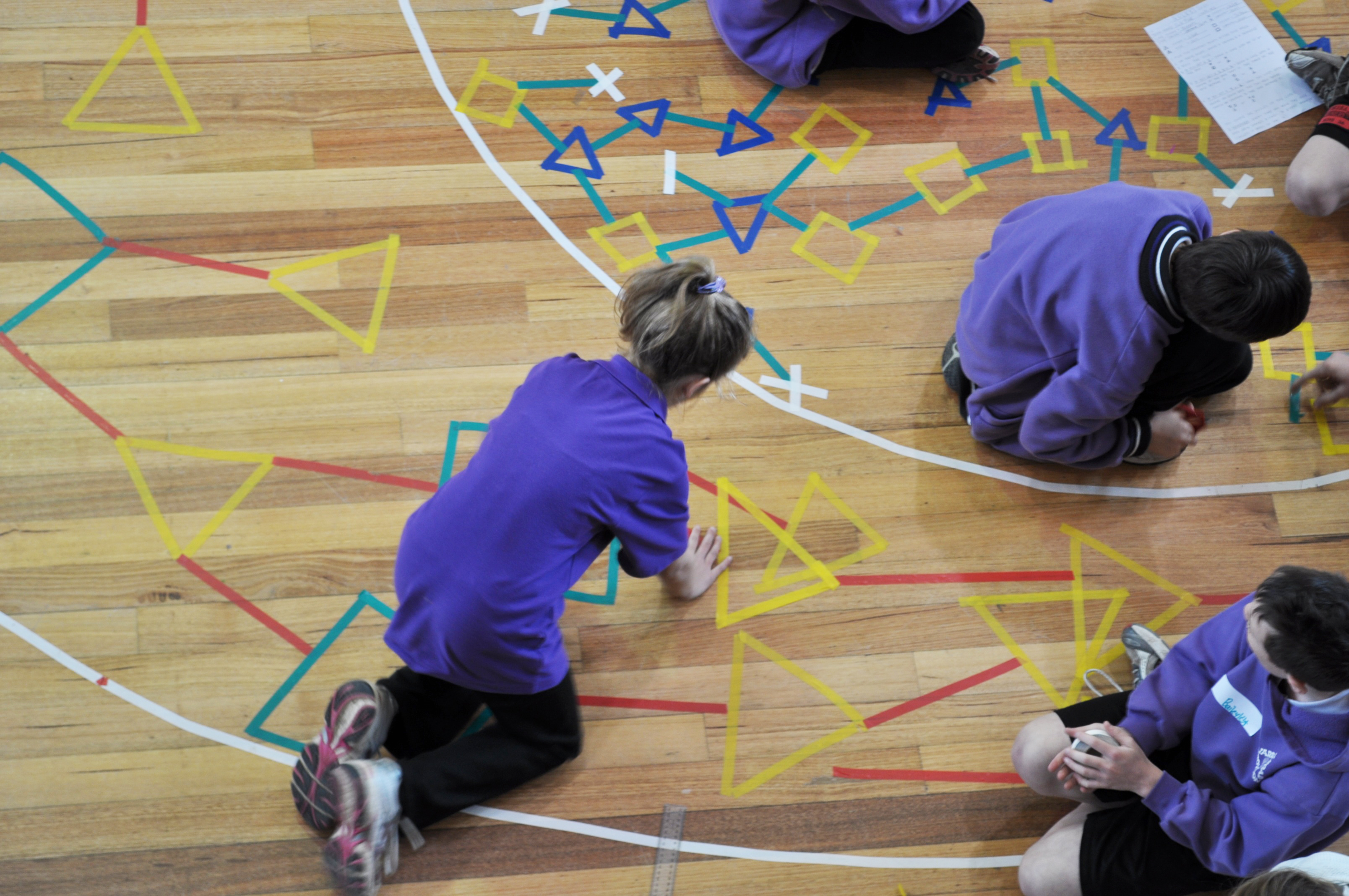
You could really see some pretty sophisticated elements coming through, even in that first drawing experiment.
All the things that we tried that day have sort of carried through in some form or another.
Briony: We got to really test our ideas, and to observe things that we hadn’t planned on. For example, the behaviour of the students involved in the collaborative drawing and the way that they organised themselves to make the drawing was just as interesting as how the rules were being played out in the drawing.
Andrew: Artists and scientists are both trying to make sense of the things in the world, whether they are human or aesthetic or physical things. In science, though, the ultimate goal is a falsifiable theory, a framework that makes quantitative predictions about measurable things. If I have a nice theory of how gravity works, say, but it doesn’t make quantitative predictions or it makes predictions and they’re wrong, then it doesn’t matter how elegant or beautiful that theory is, or how much sense it brings to things that we’ve already seen elsewhere, it has to be discarded because it doesn’t work. This isn’t a question of ‘seeking truth’ per se, it’s more a pragmatic form of self-discipline that keeps scientists focused on phenomena that are reproducible and hopefully predictable.
Whereas maybe in art there’s a bit more tolerance of a range of goals. Less emphasis on prediction, say, and more on provoking an intellectual or emotional response, individually or socially.
Briony: If you are an artist you can find a personal truth or express something universal, but by definition, as an artist you don’t have to be truthful, you don’t have to be honing in on the truth.
Drawing is an analytical process; it’s a kind of thinking.
And that’s something people often don’t understand about drawing. They perceive drawing as - like a camera - a way of creating a representation, a copy of our reality.
Andrew: One of Briony’s innovations is ‘undrawing’, where deconstructing the drawing is part of the process. Through the act of undoing you are learning more about what you made in the first place.
Briony: Couldn’t you say something similar about entropy, what does the dissipation of a system tell us about the system?
Andrew: In the process of a system becoming disordered, there will be many intermediate stages and places where it becomes temporarily more ordered, and that happens during the undrawing too.
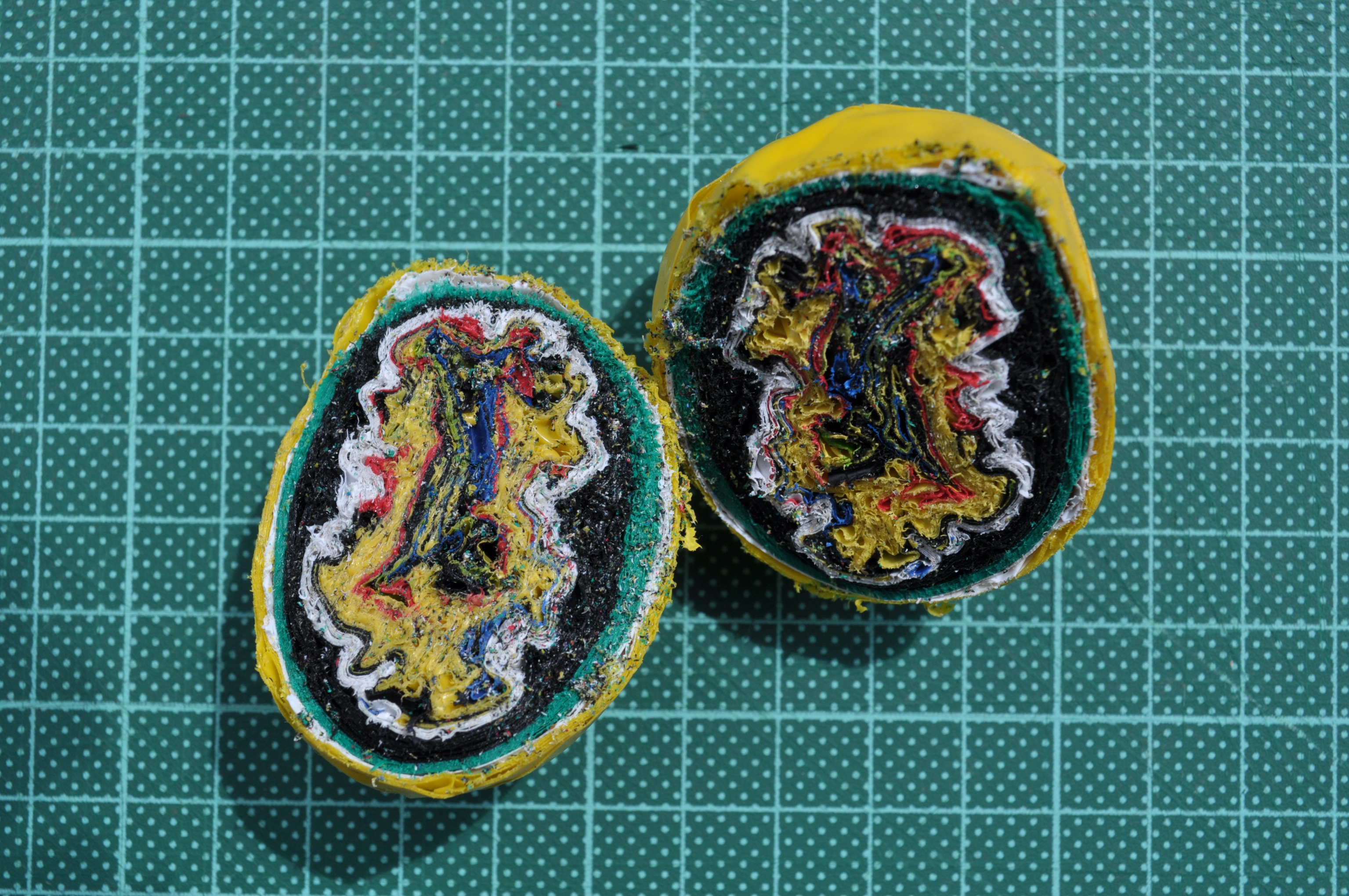
The embarrassing secret about complexity is there’s no theory ... yet.
So really important questions like, how does a pattern form - if it’s a simple system you might be able to predictit. For example scientists have worked out why tigers have stripes and leopards have spots, and there’s a mathematical reason for that. But ask why did the economy fall over in 2008? This is obviously the sort of question we’d like to know and predictthe answer to, so it doesn’t happen again. But there is no theory.
In that sort of situation, the insights that you get from looking at these complex systems, through an artistic and aesthetic lens, there’s real value in that. Practical value.
Briony: For me, it’s great to be conducting real art-science experiments. Neither of us know really what’s going to happen, and for Andrew to be part of that with his set of knowledge and to combine that with my knowledge and my training, we produce something neither of us would do on our own.
People tend to be in their silos, and not just in the science or arts. People can be very narrow in what they study and understand. We need to collaborate; we need to combine our different knowledge in order to create new possibilities.
Find out more: www.brionybarr.com and vimeo.com/brionybarr
---
The University of Melbourne has announced the appointment of Rose Hiscock as inaugural director of Science Gallery Melbourne, a flagship art-science engagement project for the promotion of science to 15-25 year-olds.
Science Gallery Melbourne will be part of the Global Science Gallery network which was pioneered from Trinity College Dublin.

